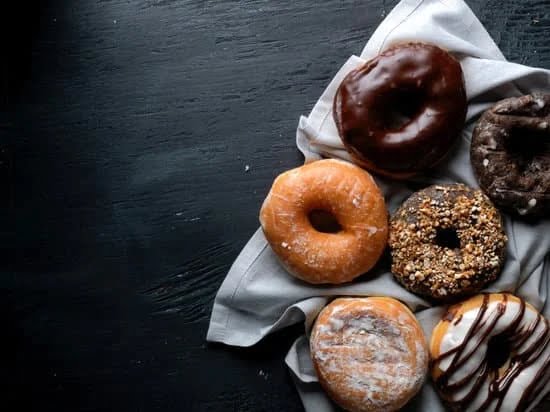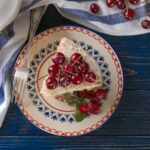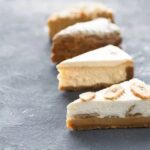Welcome to the world of chocolate cake decoration. In this blog post, we will dive into the wonderful and delicious realm of using chocolate to decorate cakes.
Chocolate has become increasingly popular as a decorative element in cake design, thanks to its versatility and ability to elevate any cake from ordinary to extraordinary. Whether you’re a professional pastry chef or an aspiring home baker, this article will provide insights, techniques, and inspiration for creating stunning chocolate-decorated cakes that are not only visually appealing but also delightfully tasty.
The use of chocolate in cake decoration has grown exponentially over the years. Gone are the days when frosting was the go-to choice for adorning cakes.
More and more bakers are turning to chocolate as they discover its richness, range of textures, and depth it can add to their creations. From smooth and velvety dark chocolate to creamy milk chocolate and delicate white chocolate, there is a wide variety of flavors and styles to choose from when it comes to incorporating chocolate into your cake designs.
In this article, we will explore different types of chocolates suitable for cake decoration and discuss their qualities and characteristics. We’ll also delve into basic techniques for tempering, melting, and working with chocolate in order to achieve professional-looking results on your cakes. Additionally, we’ll venture into more advanced techniques such as sculpting, carving, piping, drizzling, and using transfer sheets with melted chocolate.
By the end of this article, you’ll be equipped with the knowledge and inspiration needed to unleash your creativity with chocolate cake decoration. So let’s get started on this sweet journey together.
Benefits of Using Chocolate to Decorate Cakes
Using chocolate as a decorative element in cake design offers numerous benefits that make it an excellent choice for cake decoration. One of the main advantages is the rich flavor that chocolate brings to a cake. Whether using dark, milk, or white chocolate, the taste of chocolate can enhance the overall taste experience and satisfy any sweet tooth.
In addition to its flavor, chocolate also provides a variety of textures that can add depth and sophistication to any cake. From creamy and smooth to crunchy and crisp, chocolate can be used in various forms such as ganache, shards, curls, or even melted and drizzled over the cake. These different textures not only add visual appeal but also provide a delightful contrast to other elements of the cake.
Moreover, chocolate offers versatility when it comes to decorating cakes. It is highly moldable and can be shaped into intricate designs or figures with ease. Whether using it as a modeling medium for creating flowers or creating delicate patterns with melted chocolate, its flexibility allows for limitless creativity. Additionally, chocolate can be easily colored using food-safe coloring gels or cocoa butter colors, providing even more options for customization.
These benefits make chocolate an ideal choice for both amateur bakers looking to decorate their homemade cakes and professional pastry chefs aiming to create show-stopping masterpieces. With its rich flavor and versatile nature, incorporating chocolate into cake decoration elevates not just the appearance but also the overall taste experience of any baked creation.
| Benefits | Description |
|---|---|
| Rich Flavor | The taste of chocolate enhances the overall taste experience of a cake. |
| Variety of Textures | Chocolate’s different textures add depth and sophistication to cakes. |
| Versatility | Chocolate can be molded into intricate designs or figures, and easily colored for customization. |
Types of Chocolate Suitable for Cake Decoration
Using the right type of chocolate is essential when it comes to cake decoration. Different types of chocolate have different characteristics and melting points, which can affect how they are used in decorating. Here are some types of chocolate that are suitable for cake decoration:
- Dark Chocolate: Dark chocolate is a popular choice for cake decoration because of its rich and deep flavor. It has a higher percentage of cocoa solids, which gives it a more intense taste.
Dark chocolate is also known for its smooth texture, which makes it ideal for molding and creating intricate designs on cakes. It has a melting point of around 120-130°F (49-54°C), so it needs to be melted carefully to prevent scorching. - Milk Chocolate: Milk chocolate has a sweeter and creamier taste compared to dark chocolate because it contains milk powder or condensed milk in addition to cocoa solids. It has a lower percentage of cocoa solids, which gives it a milder flavor and softer texture. Milk chocolate is great for drizzling and creating smooth finishes on cakes. It has a slightly lower melting point than dark chocolate, around 110-115°F (43-46°C).
- White Chocolate: Although technically not a “chocolate” as it doesn’t contain cocoa solids, white chocolate is still a popular choice for cake decoration due to its creamy and sweet taste. It is made from cocoa butter, sugar, and milk solids, giving it a rich and velvety texture.
White chocolate is perfect for creating decorative accents on cakes or making intricate patterns. It has the lowest melting point among the three types of chocolates, at around 100-110°F (38-43°C).
When working with any type of chocolate for cake decoration, it’s important to handle it properly to achieve the best results. Be sure to use high-quality chocolate that contains real cocoa butter for the best flavor and texture.
You can melt the chocolate using a double boiler or in the microwave using short intervals, stirring well between each interval to avoid overheating. To maintain the chocolate’s temper, it’s recommended to use a digital thermometer to ensure that it doesn’t exceed its melting point.
Using different types of chocolate in cake decoration adds depth, flavor, and sophistication to your creations. By understanding the characteristics and melting points of dark, milk, and white chocolate, you can choose the right type for each decorating technique. With these tips in mind, you’ll be able to create beautifully adorned cakes that are sure to impress your family and friends.
Basic Techniques for Using Chocolate in Cake Decoration
When it comes to using chocolate in cake decoration, there are a few basic techniques that you should master. These techniques will help you temper, melt, and work with chocolate effectively to achieve beautiful and professional-looking results.
- Tempering Chocolate: Tempering is the process of heating and cooling chocolate to ensure that it has a smooth texture and glossy finish. Start by melting about two-thirds of your chocolate using a double boiler or microwave. Once melted, remove from heat and add in the remaining one-third of solid chocolate.
Stir until all the chocolate is melted and reaches a temperature between 88°F to 91°F (31°C to 33°C) for dark chocolate or 86°F to 88°F (30°C to 31°C) for milk and white chocolate. This will give your chocolate the right crystalline structure and prevent it from developing dull spots or streaks when it hardens. - Melting Chocolate: If you want to simply melt chocolate without tempering, you can do so using a microwave or double boiler method. In the microwave, chop your chocolate into small pieces and place them in a microwave-safe bowl. Heat at intervals of 30 seconds, stirring in between until fully melted.
For the double boiler method, place chopped chocolate in a heatproof bowl over simmering water, making sure the bottom of the bowl doesn’t touch the water. Stir occasionally until melted. - Working with Chocolate: Once your chocolate is tempered or melted, you can use various tools for cake decoration such as piping bags, molds, and spatulas. Piping bags are great for creating intricate designs by filling them with tempered or melted chocolates and squeezing out thin lines or shapes onto parchment paper or directly onto cakes.
Molds can be used to create molded chocolates or decorative elements like flowers or bows by pouring melted tempered chocolate into them and allowing them to set before removing. Spatulas are handy for spreading melted chocolate evenly on cakes or for smoothing out any imperfections.
By mastering these basic techniques, you’ll have a solid foundation for using chocolate in cake decoration. Remember to practice and experiment with different designs and techniques to unleash your creativity and achieve stunning results.
Creating Intricate Designs with Melted Chocolate
Piping and Drizzling Techniques
One of the most popular ways to create intricate designs with melted chocolate is through piping and drizzling. Piping involves using a piping bag fitted with a small round tip to create delicate lines, shapes, and patterns on the cake.
To pipe melted chocolate, simply fill the piping bag with the melted chocolate, gently apply pressure, and guide the chocolate onto the cake surface. This technique allows for precise control and can be used to create intricate lace patterns, floral designs, or even personalized messages.
Drizzling is another technique that adds elegance and flair to any cake design. To drizzle melted chocolate, first ensure that it is at a pourable consistency by reheating it slightly if needed. Then, use a spoon or fork to hold a small amount of melted chocolate above the cake and let it flow in thin streams onto the desired area. This technique creates beautiful marbling effects or can be used to highlight specific areas of the cake.
Freehand Drawing
For those with a steady hand and artistic flair, freehand drawing with melted chocolate offers an opportunity for creativity and personalization. Using a squeeze bottle or a small brush, carefully maneuver the melted chocolate to draw designs directly onto the cake surface. This technique works well for creating intricate borders, doodles, or even elaborate sketches.
When freehand drawing with melted chocolate, it’s essential to practice beforehand on parchment paper or acetate sheets before attempting it on the actual cake. This allows you to get familiar with controlling the flow of the chocolate and adjust your pressure accordingly. Additionally, choosing contrasting colors of melted chocolate can create impressive designs that stand out.
Tips for Success
To achieve impeccable results when working with melted chocolate for intricate designs on cakes, consider these tips:
- Place your cake on a turntable for easy rotation as you work.
- Use high-quality chocolate for the best flavor and melting consistency.
- Keep melted chocolate warm by using a double boiler or a microwave at low power, stirring occasionally.
- Allow any excess chocolate to drip off before piping or drizzling to avoid messy lines.
- Practice your design on a separate surface first to ensure you’re comfortable with the technique and achieve the desired results.
By mastering these techniques and experimenting with different designs, you can create visually stunning and unique cake decorations that will leave a lasting impression. Whether it’s delicate lace patterns, whimsical doodles, or personalized messages, melted chocolate offers endless possibilities for adding an extra touch of artistry to your cakes.
Rolled Chocolate
Rolled chocolate, also known as modeling chocolate or chocolate clay, is a highly versatile and delicious medium for cake decoration. Unlike traditional fondant, rolled chocolate has a rich and decadent taste that enhances the overall flavor of the cake.
It can be colored, molded, and shaped into various forms, making it a fantastic choice for creating intricate designs and decorations. In this section, we will explore the many benefits of using rolled chocolate in cake decoration and provide tips on how to make, color, and utilize this flexible medium.
The Benefits of Using Rolled Chocolate
One of the main advantages of using rolled chocolate is its pleasing taste. Unlike other cake decorating mediums that might be too sweet or lack flavor, rolled chocolate adds a delightful richness to any cake. Its smooth texture provides an enjoyable contrast to the softness of the cake layers.
Another benefit of rolled chocolate is its versatility. It can be easily colored with gel food coloring or cocoa powder to achieve different shades and hues. This makes it perfect for creating vibrant flowers, realistic figures, or even mimicking textures such as wood grain or fabric patterns.
Additionally, rolled chocolate is incredibly pliable and easy to work with. It can be shaped into intricate designs by hand or using various tools like molds and cookie cutters. The flexibility allows for more creative freedom in designing unique decorations that are tailor-made for each cake.
Working with Rolled Chocolate
To make rolled chocolate, you will need high-quality dark or milk chocolate and corn syrup. Start by melting the chocolate either in a microwave at low heat or over a double boiler until smooth. Gradually add corn syrup while continuously stirring until it forms a dough-like consistency.
Once the mixture has cooled down completely, knead it on a clean surface until it becomes pliable. If the mixture feels sticky, add some powdered sugar while kneading until it reaches the desired texture.
To color rolled chocolate, use gel food coloring sparingly while kneading. Start with a small amount and gradually add more until the desired color is achieved. Remember to wear gloves or use plastic wrap to avoid staining your hands during this process.
When working with rolled chocolate, keep it wrapped tightly in plastic wrap when not in use to prevent it from drying out. If the chocolate becomes too hard to handle, microwave it for a few seconds to soften it slightly.
The possibilities with rolled chocolate are endless. It can be shaped into flowers, bows, ribbons, animals, or even intricate lace patterns. Use your imagination and explore different techniques such as embossing or painting on the surface of the chocolate once it has hardened.
Rolled chocolate opens up a world of creativity in cake decoration and allows you to add a personal touch to your designs. Its delicious taste, versatility, and ease of handling make it an excellent choice for both beginner and experienced cake decorators alike.
Using Chocolate Transfer Sheets for Professional-Looking Cakes
When it comes to creating professional-looking cakes, one technique that can elevate your cake designs to the next level is using chocolate transfer sheets. These sheets are a fantastic way to transfer intricate designs and patterns onto your cakes, adding a touch of elegance and sophistication. In this section, we will explore how to effectively utilize chocolate transfer sheets and offer inspiration for their incorporation into your cake decorating projects.
To use chocolate transfer sheets, you will first need to gather the necessary materials:
- Chocolate transfer sheets in various patterns and designs.
- High-quality tempered chocolate (dark, milk, or white).
- A sharp pair of scissors or a craft knife.
- Parchment paper or acetate sheets.
- A ruler or template (optional).
- A baking tray.
Here’s a step-by-step guide on how to use chocolate transfer sheets for your cakes:
- Choose the desired design: Chocolate transfer sheets come in a wide variety of patterns and styles. Select a design that complements your cake theme or matches your artistic vision.
- Melt and temper the chocolate: Properly tempering the chocolate is crucial to ensure that it sets correctly and has a glossy finish. Use high-quality tempered chocolate that is suitable for decorating purposes.
- Cut the appropriate size: Measure the dimensions of your cake or specific area where you want to apply the design. Cut the chocolate transfer sheet slightly larger than needed to allow for trimming.
- Place the sheet on melted chocolate: Place the glossy side of the transfer sheet facing down onto melted tempered chocolate. Gently press it down to ensure it adheres properly.
- Allow it to set: Transfer the sheet onto a baking tray lined with parchment paper or acetate sheets, making sure not to move it too much as this may cause smudging of the design. Allow it to cool completely until set.
- Apply it to the cake: Once the chocolate has set, carefully peel off the transfer sheet from the chocolate. Flip it onto your cake, ensuring that the design is facing outward. Press it lightly to transfer the pattern onto the cake’s surface.
- Finishing touches: Complete your cake by adding any additional decorations or embellishments to complement the transferred design.
By using chocolate transfer sheets, you can achieve professional-looking cakes with intricate and eye-catching designs. Experiment with different patterns, colors, and combinations to create unique and personalized creations that will impress your guests. Chocolate transfer sheets offer endless possibilities for creativity and are sure to elevate your cake decorating skills to a whole new level.
Advanced Techniques
Sculpting and carving with chocolate is an advanced technique that allows cake decorators to create elaborate and intricate designs. This section will guide readers through the process of using chocolate as a sculpting medium, providing examples and tips for creating 3D shapes, figurines, and customized decorations.
One of the primary benefits of using chocolate for sculpting and carving is its malleability when melted. Chocolate can be tempered to achieve the ideal consistency for shaping, allowing decorators to mold it into any desired shape or form. Whether it’s sculpting a life-like flower or carving a detailed pattern, chocolate provides the flexibility needed to bring creative visions to life.
To begin sculpting with chocolate, it is essential to have a solid understanding of tempering techniques. Properly tempering the chocolate ensures that it sets correctly and has a smooth finish. Additionally, using high-quality couverture chocolate will result in better handling properties and a more refined taste.
When sculpting with chocolate, it’s crucial to work quickly but carefully. The melted chocolate should be cooled slightly before forming it into desired shapes, as working with overly warm chocolate can lead to misshapen creations. Tools such as silicone molds or modeling tools can aid in creating intricate details and textures.
Carving with chocolate involves precisely cutting away sections of a larger piece of molded chocolate to reveal intricate patterns or designs underneath. This technique requires patience, planning, and precision. It is recommended to sketch out the design beforehand and gradually carve away small sections at a time using sharp knives or specific carving tools.
By incorporating sculpted and carved elements into cake designs, decorators can add dimensionality, uniqueness, and visual interest to their creations. From realistic sculptures like flowers and animals to geometric patterns or abstract forms, there are endless possibilities for embracing the advanced technique of sculpting and carving with chocolate in cake decoration.
Overall, utilizing this technique takes practice and experimentation but can result in truly awe-inspiring cake designs. With the proper tools, patience, and a creative mindset, decorators can unleash their imagination and create edible works of art. The next section will explore inspirational chocolate-decorated cakes from professional bakers, showcasing the use of sculpting and carving techniques in real-life applications.
Showcasing Inspirational Chocolate Decorated Cakes
In this section, we will take a moment to appreciate some of the most visually stunning chocolate-decorated cakes created by professional bakers. These cakes serve as a great source of inspiration for those looking to unleash their creativity and try their hand at chocolate cake decoration.
The first cake we showcase is a masterpiece of elegance and sophistication. Created by renowned pastry chef, the cake features intricate lace patterns made from melted chocolate. The delicate lace creates a beautiful contrast against the dark chocolate ganache that covers the cake. This design showcases the ability of melted chocolate to create intricate and delicate details that can elevate any cake.
Next, we have a chocolate-decorated cake with marbling effects. This technique involves melting dark and white chocolate together, swirling them around to create a marbled effect, and then drizzling it over the cake. The end result is a mesmerizing pattern reminiscent of an abstract painting. This design demonstrates how simple techniques can be used to achieve striking visual impact.
Lastly, we have a freehand drawing on a cake using melted chocolate as icing. A talented artist created an incredibly lifelike portrait using only dark and white chocolate as their medium. The level of detail achieved with melted chocolate is truly impressive, showcasing the versatility of the medium in creating intricately designed cakes.
These cakes are just a few examples of what can be accomplished with chocolate in cake decoration. They serve as a reminder that imagination and experimentation are key elements in this art form. With practice and creativity, anyone can unleash their inner artist and create stunning works of edible art with chocolate as their canvas.
Now that you have been inspired by these professional creations, it’s time to grab your piping bag, molds, or spatulas and embark on your own journey in chocolate cake decoration. Remember to have fun, experiment with different techniques and designs, and most importantly, savor the delicious results that await you.
Conclusion
In conclusion, the art of chocolate cake decoration offers endless possibilities for creativity and expression. By utilizing chocolate as a decorative element, bakers can elevate their cakes to new heights of beauty and sophistication. The multitude of benefits that chocolate brings to cake decorating, including its rich flavor, variety of textures, and ability to add depth and complexity, make it an excellent choice for any baker looking to create visually stunning creations.
Throughout this blog post, we have explored various techniques and options for using chocolate in cake decoration. From piping and drizzling melted chocolate to creating intricate designs with rolled chocolate or utilizing transfer sheets, there are countless ways to incorporate chocolate into your cake decorating projects. With step-by-step instructions and tips provided, even beginners can embark on their own chocolate decorating journey with confidence.
To further inspire our readers, we have showcased a compilation of visually stunning chocolate-decorated cakes from professional bakers. Each cake demonstrates different styles, themes, and techniques, reminding us that the possibilities are truly endless when it comes to working with chocolate. These examples serve as a reminder that by unleashing your creativity and experimenting with different methods, you too can create beautiful works of edible art.
So go ahead and unleash your creativity with chocolate cake decoration. Whether you are a novice or an experienced baker, experimenting with different techniques will not only result in delicious cakes but also showcase your unique style.
By embracing the art of chocolate cake decoration and utilizing the benefits discussed in this blog post – from its flavorsome qualities to its versatility – you can create cakes that not only taste exquisite but also look visually stunning. So get ready to wow your family and friends at your next celebration with your own handcrafted masterpiece.
Frequently Asked Questions
How to decorate a cake with just chocolate?
Decorating a cake solely with chocolate can be both delicious and visually appealing. To begin, make sure you have some high-quality chocolate on hand. Choose between dark, milk, or white chocolate based on your preference and the overall aesthetic you want to achieve. Start by melting the chocolate using a double boiler or microwave, making sure not to overheat it.
Once melted, transfer it into a piping bag with a small tip or into a zip-top bag with a tiny hole cut in one corner for fine lines and intricate designs. Alternatively, you can use a spoon to drizzle the melted chocolate across the surface of the cake for a more rustic look. Experiment with different techniques such as creating swirls, writing messages, or even piping flowers onto the cake using only chocolate. Allow the decorations to set before serving or refrigerating the cake.
Can you use melted chocolate to decorate a cake?
Melted chocolate is indeed an excellent choice for decorating cakes, adding both flavor and elegance to any creation. Using melted chocolate allows for various design possibilities and is relatively simple to work with. After selecting your preferred type of chocolate (dark, milk, or white), melt it gently in either a double boiler or by microwaving in short intervals while stirring frequently until smooth and liquidy.
Make sure not to overheat the chocolate as it may scorch or become unusable. Once melted, you can pour it over the top of your cake and let it drip down naturally for an eye-catching effect. Additionally, you can create patterns, write messages, pipe dots or lines directly onto the cake using a piping bag with a small tip or even use stencils if desired.
Which chocolate is used to decorate a cake?
Virtually any type of chocolate can be used to decorate a cake depending on personal preference and desired taste. The choice typically comes down to dark, milk, or white chocolate that each offers distinct flavors and appearances. Dark chocolate tends to have an intense cocoa taste that pairs well with rich and dense cakes like chocolate or red velvet. Its deeper color can create a bold contrast against lighter-colored frostings. Milk chocolate, on the other hand, has a sweeter and creamier profile that works harmoniously with vanilla or fruit-flavored cakes.
Its lighter hue presents a softer visual appeal. Lastly, white chocolate provides a delicate and sweet flavor that complements almost any cake flavor. It is particularly stunning to use when decorating dark-colored cakes as it creates an elegant contrast. Ultimately, the best chocolate for cake decoration is one that aligns with your taste preferences and overall vision for the final product.

Welcome to our cake decorating blog! My name is Destiny Flores, and I am the proud owner of a cake decorating business named Cake Karma. Our mission is to provide delicious, beautiful cakes for all occasions. We specialize in creating custom cakes that are tailored specifically to each customer’s individual needs and tastes.





